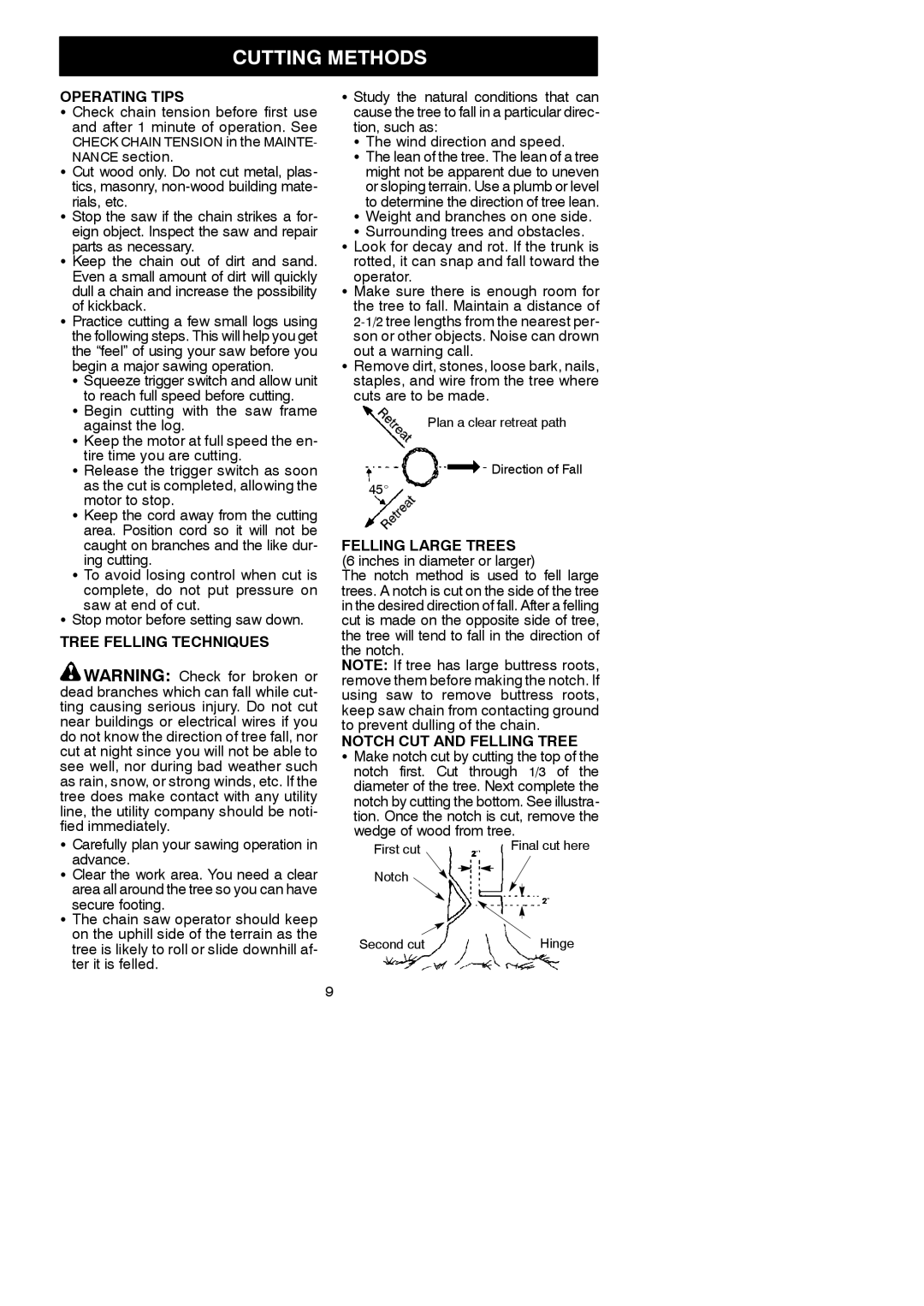PP400E specifications
The Poulan PP400E is a gas-powered chainsaw designed for homeowners and DIY enthusiasts who need a reliable tool for cutting firewood, clearing brush, or tree trimming. This chainsaw combines power, efficiency, and user-friendly features, making it an excellent choice for a range of cutting tasks.One of the standout features of the Poulan PP400E is its robust 40cc, 2-cycle engine. This powerful engine provides the necessary torque and cutting speed, allowing users to tackle both light and medium-duty tasks with ease. The engine is engineered for optimum fuel efficiency, giving users longer run times between refuels, which is particularly useful during extended cutting sessions.
The PP400E incorporates a 16-inch bar and chain, which strikes a balance between versatility and control. The 16-inch length is ideal for handling smaller jobs while still providing enough reach for larger branches and logs. The chain is designed for quick and easy adjustments, enabling users to maintain proper tension without the need for complex tools, making it more convenient for those less experienced with chainsaw maintenance.
Safety is a top priority in the design of the PP400E, which includes a chain brake system that instantly stops the chain in the event of kickback, offering peace of mind during operation. Additionally, the chainsaw features a comfort grip handle, which is ergonomically designed to reduce fatigue and enhance control, allowing users to work for longer periods without excessive strain.
The Poulan PP400E also features an automatic oiler that delivers a steady supply of lubrication to the chain and bar, ensuring efficient operation and prolonging the life of the cutting components. This system is particularly beneficial for maintaining optimal performance in various cutting conditions.
In terms of design, the Poulan PP400E is relatively lightweight compared to other chainsaws in its class, making it easy to handle and maneuver. Its compact design contributes to its portability, allowing users to transport it easily to different job sites.
Overall, the Poulan PP400E stands out as a versatile and dependable chainsaw that meets the needs of casual users and serious hobbyists alike. With its powerful engine, user-friendly features, and commitment to safety, the PP400E is a smart investment for anyone looking to tackle outdoor cutting tasks with efficiency and ease.

